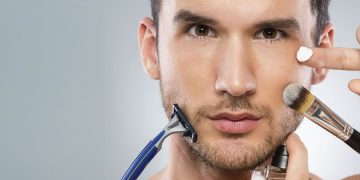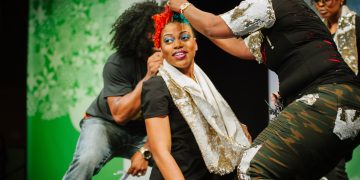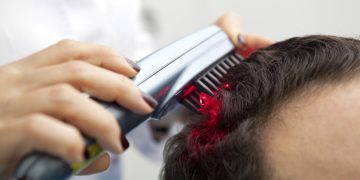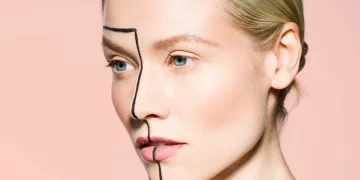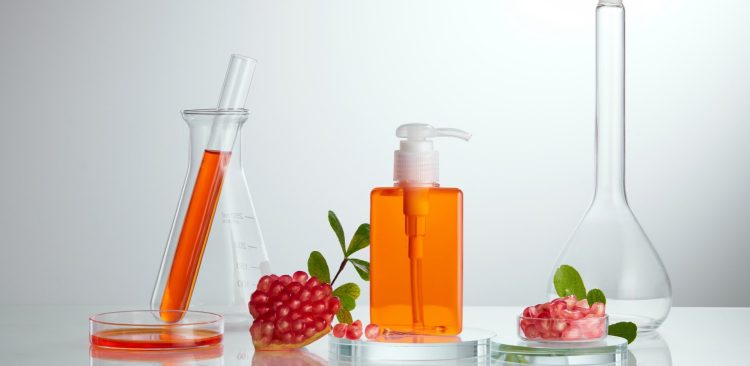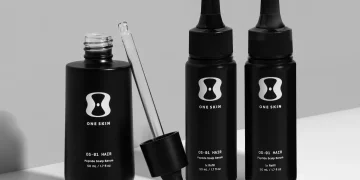Artificial intelligence is rapidly reshaping every corner of the beauty and wellness world—and haircare is no exception. From algorithm-generated product recommendations to deep-learning scalp scanners that analyze microscopic damage, AI is quietly rewriting how we understand, maintain, and optimize hair health. But is this just a futuristic convenience—or the beginning of a true revolution in trichology?
In this article, we explore how machine learning intersects with scalp science, how data is redefining formulas and routines, and what the future of hair diagnostics may look like as AI becomes more intelligent, more accessible, and more deeply integrated into daily beauty habits.
1. How Is AI Changing the Way We Diagnose Hair and Scalp Issues?
Traditional hair diagnosis often relies on visual inspection, professional experience, and user-reported symptoms. While expert human evaluation remains crucial, it is limited by one major factor: subjectivity.
AI offers a game-changing alternative—objective, measurable, repeatable analysis powered by high-volume data. Modern AI hair diagnosis tools can detect subtle conditions invisible to the naked eye. These systems scan thousands—or even millions—of scalp and hair images to identify patterns and deviations based on:
- Hair density
- Follicle size
- Sebum distribution
- Microinflammation
- Hair shaft defects
- Scalp redness or flaking
- Miniaturization related to early hair loss
Because these systems learn continuously, they improve with every scan.
Many platforms now rely on computer vision, the same technology behind facial-recognition software. Users simply upload a photo or capture their scalp using a specialized device. The AI then compares the image to datasets of diagnosed conditions, producing insights within seconds.
As accuracy improves, AI is increasingly being used by dermatologists and trichologists as a powerful assistant—not a replacement.
2. How Do Machine Learning Models Enhance Trichology Insights?
Machine learning thrives on complexity. Human hair and scalp ecosystems, with their hormonal, environmental, genetic, and lifestyle influences, provide exactly the kind of multidimensional data ML models excel at interpreting.
AI can uncover correlations no human specialist could easily identify, such as:
- Links between ingredient sensitivities and flare-ups
- Early markers of androgenic alopecia
- Long-term scalp microbiome changes
- Environmental triggers for breakage or frizz
- Lifestyle factors influencing shedding patterns
For example, a model might detect that users sleeping fewer than six hours per night show a significantly higher rate of seasonal shedding—or that specific cities correlate with increased scalp irritation due to air pollution.
As data grows, predictions become hyper-specific, allowing users to receive hair advice tailored not just to their “type,” but to their unique life.
3. Can AI Create Truly Personalized Formulations?
This is where innovation becomes exciting. AI is no longer limited to diagnosis—it’s now shaping customized product development.
Some companies already use AI to generate formulas based on individual:
- porosity
- elasticity
- scalp hydration
- curl pattern
- chemical history
- environmental exposure
- diet patterns
- stress levels
- microbiome composition
Algorithms evaluate ingredient interactions and concentrations, producing precise blends optimized for both immediate performance and long-term health.
Instead of guessing whether you need protein or moisture—or cycling through endless bottles—AI can calculate the exact ratios your hair requires.
In the future, we may see:
- Dynamic formulas that adjust seasonally
- Micro-biome–matching scalp serums
- Vegan or allergen-free custom blends generated instantly
- Smart packaging that updates product recommendations via sensor data
When combined with biotechnology, these systems may even help develop peptides, probiotics, or growth factors tailored to specific scalp environments.
4. What Role Will Real-Time Data Play in Future Haircare Routines?
Today, most haircare decisions are reactive—we respond after breakage, dryness, or irritation appears. AI aims to shift this toward predictive and preventive care.
Emerging technology includes:
1. Smart brushes with micro-sensors
These devices analyze:
- hair tension
- breakage force
- moisture levels
- sebum distribution
- static buildup
Then they deliver real-time feedback like:
“You’re brushing too aggressively” or “Your hair moisture is below optimal levels.”

2. Smart scalp cameras
Portable, phone-connected devices that track ongoing scalp metrics and notify you when anomalies appear before they become visible.
3. Wearable health trackers
Hair is affected by:
- cortisol levels
- sleep quality
- hormonal fluctuations
- nutrition
- metabolism
AI can integrate data from wearable devices to produce hair-related predictions or product recommendations.
Imagine this future scenario:
Your smartwatch notices elevated stress and alerts your haircare app to adjust your routine, recommending a soothing botanical scalp serum for the week.
This system doesn’t just treat symptoms—it anticipates them.
5. How Will AI Empower Professionals in Dermatology and Haircare?
While some fear that AI may replace human expertise, the opposite is more likely: AI becomes a powerful enhancement tool.
Professionals can use machine learning to:
- Validate diagnoses with objective data
- Track progress and treatment efficacy
- Reduce diagnostic guesswork
- Save time with automated analysis
- Standardize care across clinics
- Identify rare scalp disorders
- Personalize medical hair-loss treatments
AI could also democratize trichology. High-quality diagnosis, once accessible only through costly clinical visits, may become available to anyone with a smartphone.
This levels the playing field—especially for people in rural or underserved areas.
6. Are There Ethical Concerns We Should Consider?
As with all AI advancements, hair diagnostics raise important ethical questions.
1. Data Privacy
Scalp and hair images are biometric data. They must be protected.
2. Algorithm Bias
AI must be trained on diverse hair types—including:
- tightly-coiled hair
- textured hair
- low-density hair
- grey and silver hair
- chemically treated hair
Lack of diversity could lead to inaccurate diagnoses for large populations.
3. Over-reliance
AI is a tool, not a doctor. Human expertise remains essential for interpretation and treatment planning.
4. Transparency
Users deserve to know how data is used, stored, and shared.
When ethically managed, however, AI has the power to significantly elevate global haircare standards.
7. What Does the Future Hold for AI-Driven Hair Diagnostics?
The next decade promises extraordinary advancements. We may soon see:
- AI scalp maps updated daily like a skincare routine
- Nanotechnology sensors embedded in hair tools
- Biotech-AI hybrid formulas that regenerate damaged keratin
- 3D-printed custom hair fibers for extensions or thinning areas
- Virtual dermatologists offering 24/7 scalp support
- Real-time pollution-based routine adjustments
- AI-guided hair transplant planning with unprecedented precision
Eventually, AI could even predict changes based on aging, hormones, environment, or genetics—giving users a proactive roadmap for lifelong hair health.
This isn’t just the future of haircare; it’s the future of personalized biology.
Conclusion: Are We Ready for AI-Enhanced Haircare?
AI is not replacing human specialists—it is empowering them. By combining machine learning accuracy with the expertise of dermatologists, trichologists, and formulators, we are entering an era where haircare is more personalized, scientific, and effective than ever.
For individuals, AI promises:
- better diagnosis
- customized routines
- fewer product mistakes
- faster results
- deeper understanding of personal hair biology
AI isn’t just improving haircare—it’s redefining it.
The question is no longer “Is AI coming?”
It’s “How soon will AI be integrated into every part of our beauty routine?”
















